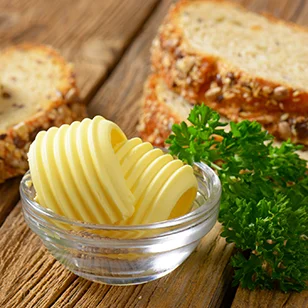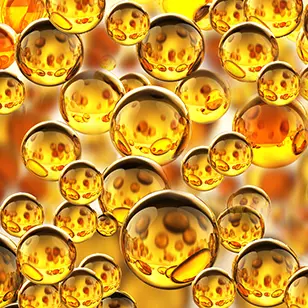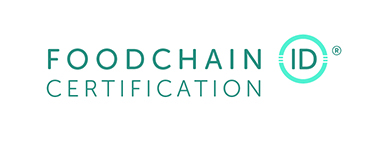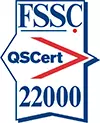Applications
Aquafeed

Lecital is very active supplying rather significant quantities of its lecithin into Aquaculture. Imagine that you need an ingredient for aquaculture species nutrition which is highly potent in energy value, on the level with fats and oils. Then you also need another ingredient which will bind these fats and oils with water. Then it would be great to have an ingredient which could also bring nutritional value, and help improve many processes in your growing seafood and fish larvae. We will also need an ingredient which will help absorb Vitamins and Minerals which will be added. It would also be great for these ingredients to be natural and not synthetic. And it would also help if they could be cost effective and easy to source. Yeah - and it would be perfect if it could all be one ingredient and not many. No problem – it is LECITAL Aquafeed Lecithin.
Lecithin’s combined effect on lipid metabolism results in enhanced feed absorption efficiency, growth, and survival rates in fish and crustaceans. The synergetic benefits of lecithin are especially evident in the diets of young aquatic species. The under-developed digestive tracts of these young creatures are very limited in their ability to synthesise adequate quantities of phospholipids and other important nutrients. Addition of lecithin as a source of phospholipids, choline and inositol improves growth and survival in fish larvae such as trout, salmon, sturgeon, bream and young crustaceans. Aquaculture as artificial fish and seafood farming, is one of the world's leading trends in the agro-industrial complex: the stocks of naturally caught fish are decreasing every year, and price for it grows rapidly in proportion to the increase in demand. The global consumption of seafood has increased due to the rising awareness about the health benefits of consuming fish and other aquaculture species. They are a rich source of vitamins, minerals, amino acids, and essential fats (long-chain omega-3 fatty acids).

However, the diet of fish and seafood farmed by aquaculture enterprises is in most cases different from the diet of naturally caught fish. The problem of choosing a balanced feed is especially important for enterprises that grow predatory fish species, in particular, salmon and sturgeon families. Not all water is clean, having various water-soluble pollutants which interfere with metabolism, especially in the underdeveloped juvenile creatures. Lecithin works to expedite lipid and other nutrient transport, improving survival rates in early stages of aquatic life.
The range of nutrition of salmonids in natural conditions is quite wide and includes zooplankton, larvae of various insects. Also, the diet of this species includes shellfish and small fish. Some fish farms have practiced feeding salmonids with natural food. However, in order to produce 1 pound of commercial salmon, according to research in the journal “Nature”, more than three pounds of wild fish - such as anchovies, herring, sardines, menhaden, mackerel, are needed. With such a consumption of feed, the cost of production increases greatly. In addition, prices for feed fish fluctuate throughout the year, so it is very difficult to calculate the exact cost of feed when planning the annual budget. Finally, it is inconvenient to store fodder fish: you need either a separate jig or impressive refrigeration capacity.
This has resulted in the adoption of various methods to increase production and today the majority of aquaculture enterprises around the world choose a natural-sourced, secure, excellent feed ingredient that is a top-source of dietary phospholipids. Like vitamins, phospholipids in Lecital lecithin are essential nutrients. Phospholipids in general are among the most important substances in the human and animal organism, where they have a multiple function: as a source of energy, as physiological agents in metabolism and as emulsifiers for fats.
● Enhances survival rate of shrimp and fish larvae
● Performs as a natural antioxidant
● Executes a function of a feed attractant
● Enhances feed utilization efficiency
● Improves resistance to stress
● Allows for a consistent source of bio-available phospholipids
● Enhances growth rate of fish and shrimp
● Great energy addition to the diet
● Increases absorption of water-soluble nutrients

In their physiological function they act as a transport medium and thus control processes in the membranes of the body´s cells. They promote enzyme activity and protect the organism against detrimental changes. Being surfactants, they help to emulsify and disperse fats and thus make them more digestible. Besides, lecithin has well balanced amino acid profile and furthermore, soya lecithin has the advantage of being resistant to oxidation and spoilage and is naturally clean from organisms such as fungi, viruses and bacteria that are harmful to crustaceans and fish.
The soy lecithin segment, by ingredient, is projected to account for the largest share during the forecast period in the aquafeed market and it is estimated to dominate the aquafeed market. Compared to fishmeal, AQUA FEED Lecithin as a multifunctional lecithin has advantage of high protein and amino acids digestibility co-efficiency, readily available and consistent quality.
LECITAL offers a complete range of standardized fluid and enhanced deoiled lecithin products, including and powder products.





















